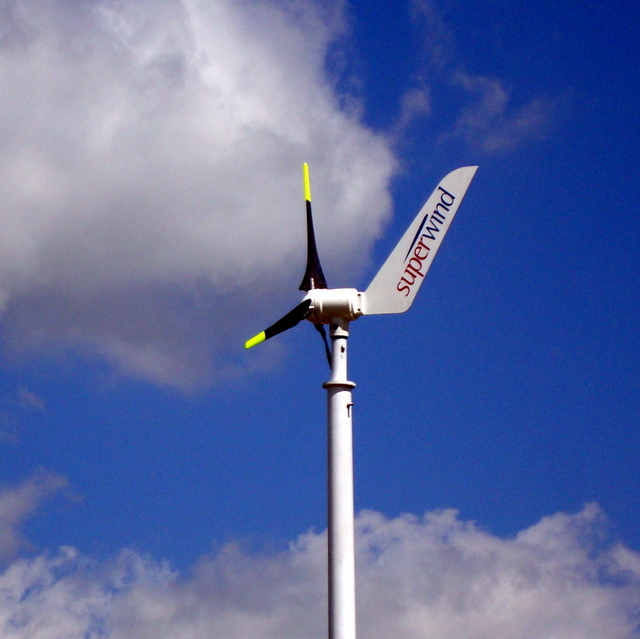
When Erie 1 BOCES wanted to introduce wind power technology to their program, they approached IMT Solar for help. We designed a total off-grid system for them based around the SuperWind 350 micro wind turbine, along with a comprehensive monitoring and control system to bring the data into the classroom.

Key subcontractors were brought in to install the wind turbine on an engineered foundation in front of the school.

A conduit had to be run from the base of the wind turbine to the facility for the power from the turbine and the signal from the anemometer mounted on the mast.
Using a ditch witch allowed the conduit to be run with a minimum of disturbance to the landscaping.
The electrical contractor on the site used his bucket truck to raise the mast with the wind turbine onto the mounting base.
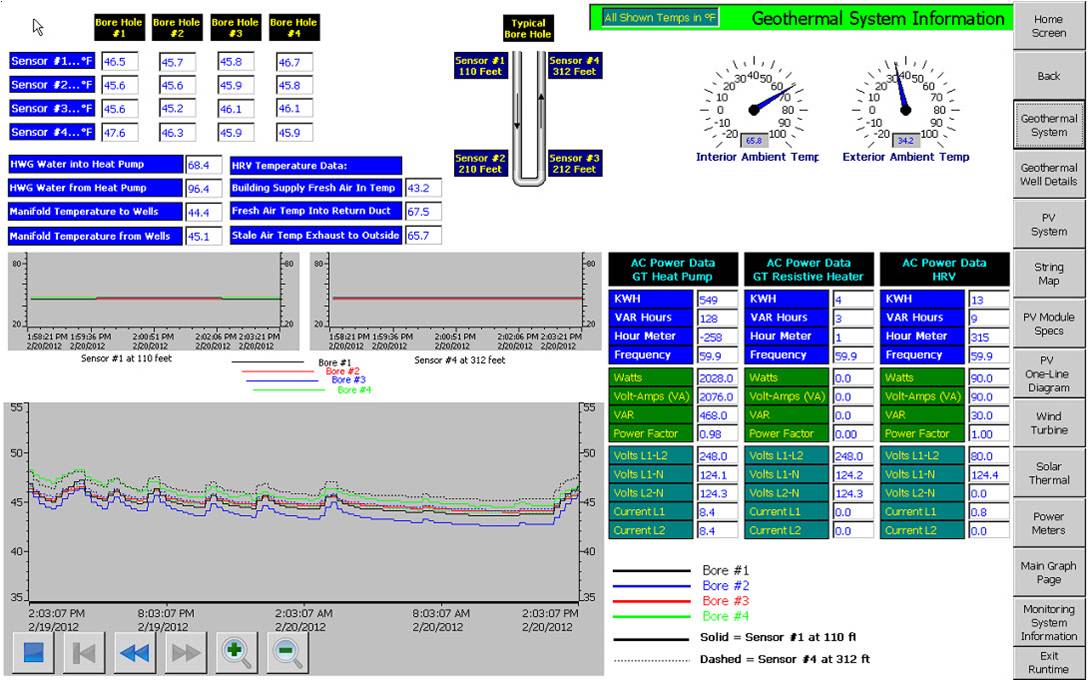
Four different grouts were used to backfill each of the four vertical bore holes. To study the long term differences in the thermal conductivity of the different grouts, the students embedded four temperature sensors in each hole so they could compare the temperatures at the same levels in each bore hole. IMT Solar shows all these temperatures in real time values as well as a graphical format. Power meters were also utilized to study all the power and energy characteristics of the three different parts of the system…the heat pump, the backup resistive heater, and the heat recovery system.
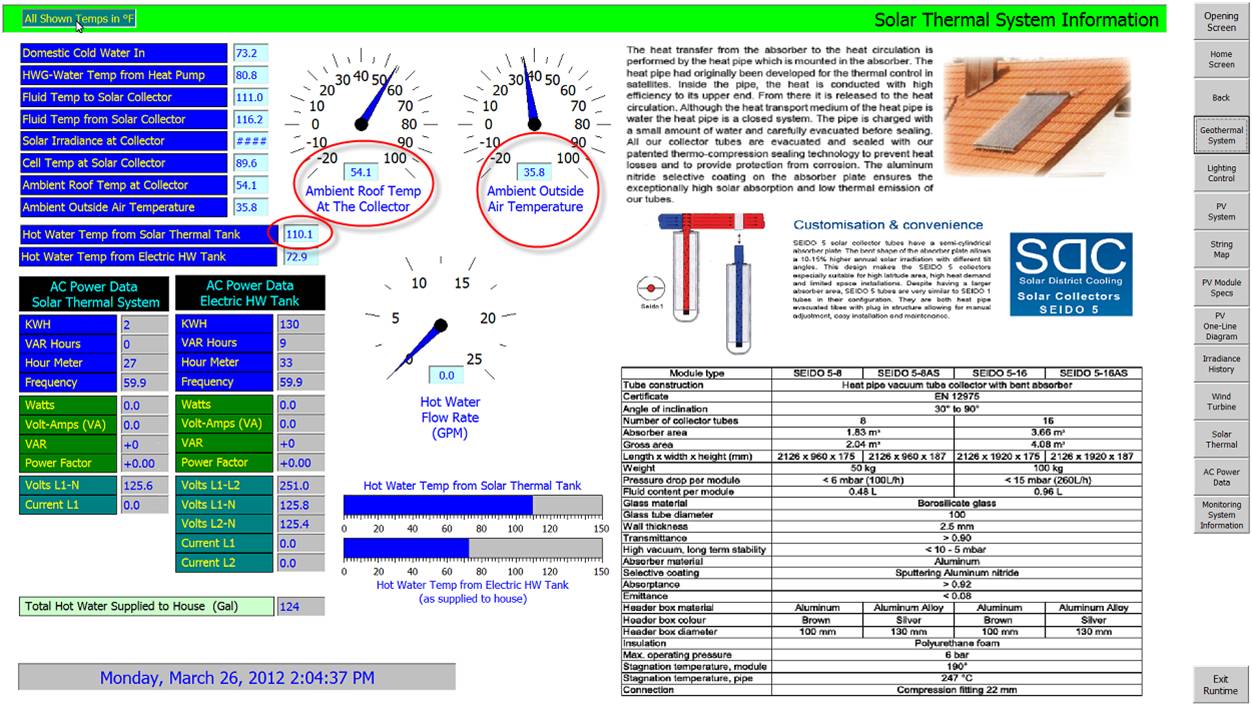
For each renewable energy system, IMT Solar tried to embed a brief tutorial on how the system works, as well as the specifications for the exact system used in the home. This gives the many visitors who tour the home a better idea of what each system is and how it works, and the new students key information on the specs of each system
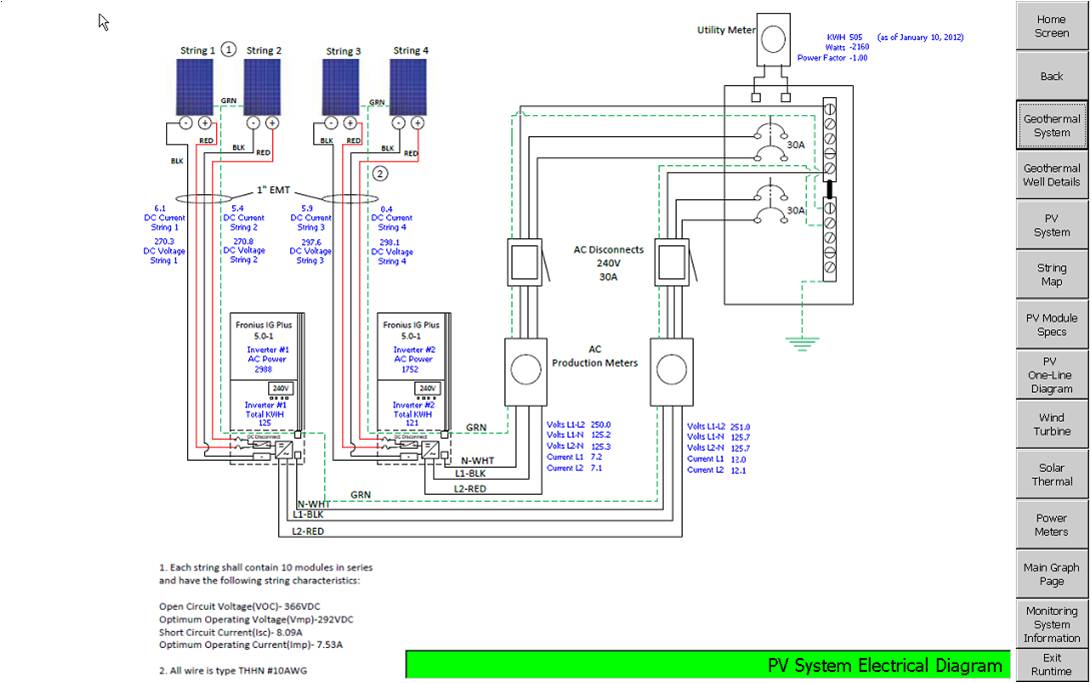
IMT Solar encourages putting key system information right on the screens. These are typically drawings that would typically be lost somewhere in a three ring binder. Here the autocad drawing of the PV electrical system becomes one of the screens, with live data embedded right on it. It allows students to show new students and visitors how the system is wired. It also allows them to quickly diagnose problems in the electrical system. A similar screen was done for the string map…showing exactly which solar modules are in each of the four strings.
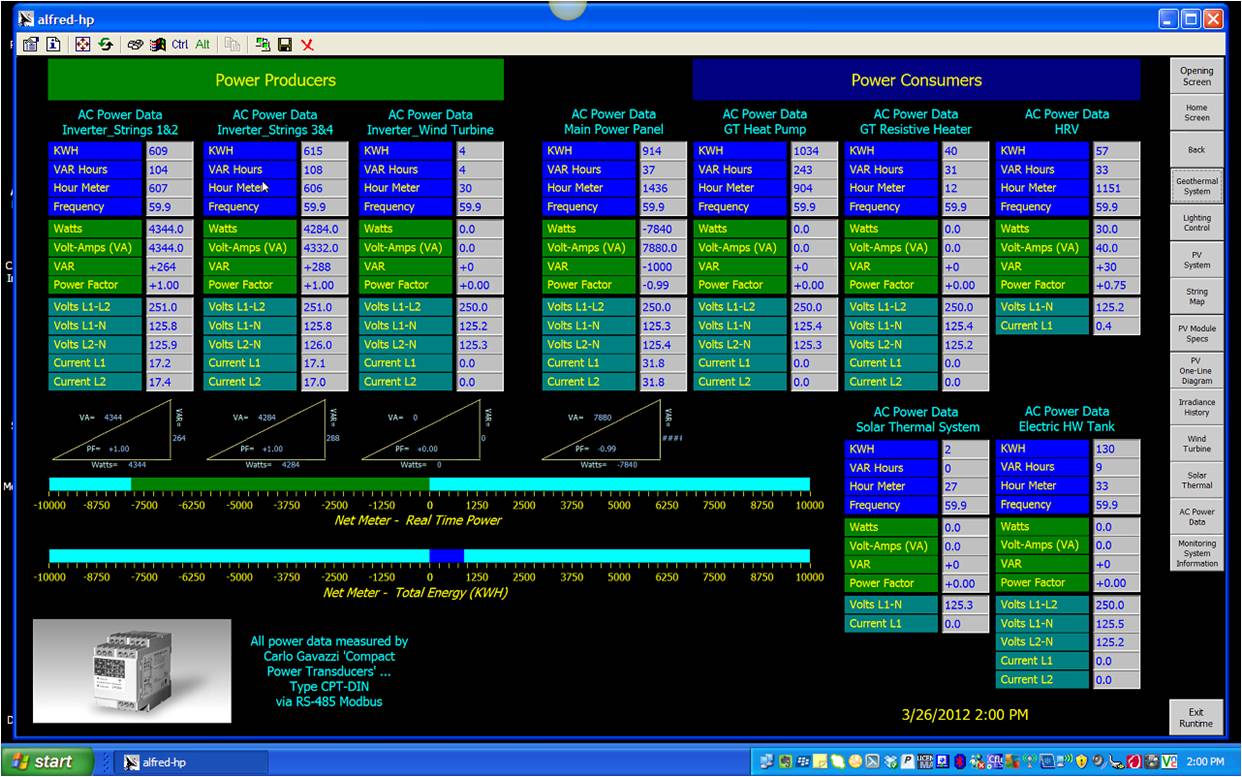
IMT Solar used a total of nine power meters in the overall system. Three measured the power and energy characteristics of the power produced by the two PV and one wind inverters. Five were used to measure the power and energy characteristics of the Geothermal and Solar Thermal systems. And the final one was used in the main electrical panel of the house as a net meter, to show the accumulated energy pushed or pulled from the grid.
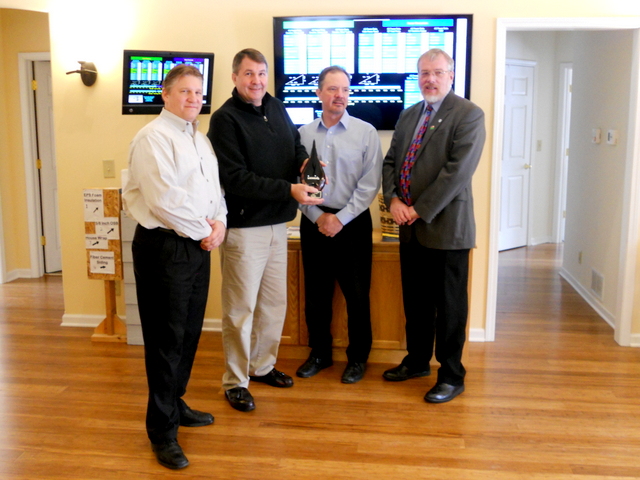
IMT Solar was enrolled as an entry in Siemens TIA Portal Application of the Year contest for 2012 as a result of the Siemens hardware and software products utilized in the Zero Energy Home project at Alfred. IMT Solar ultimately won this award, taking first place across the entire USA.

